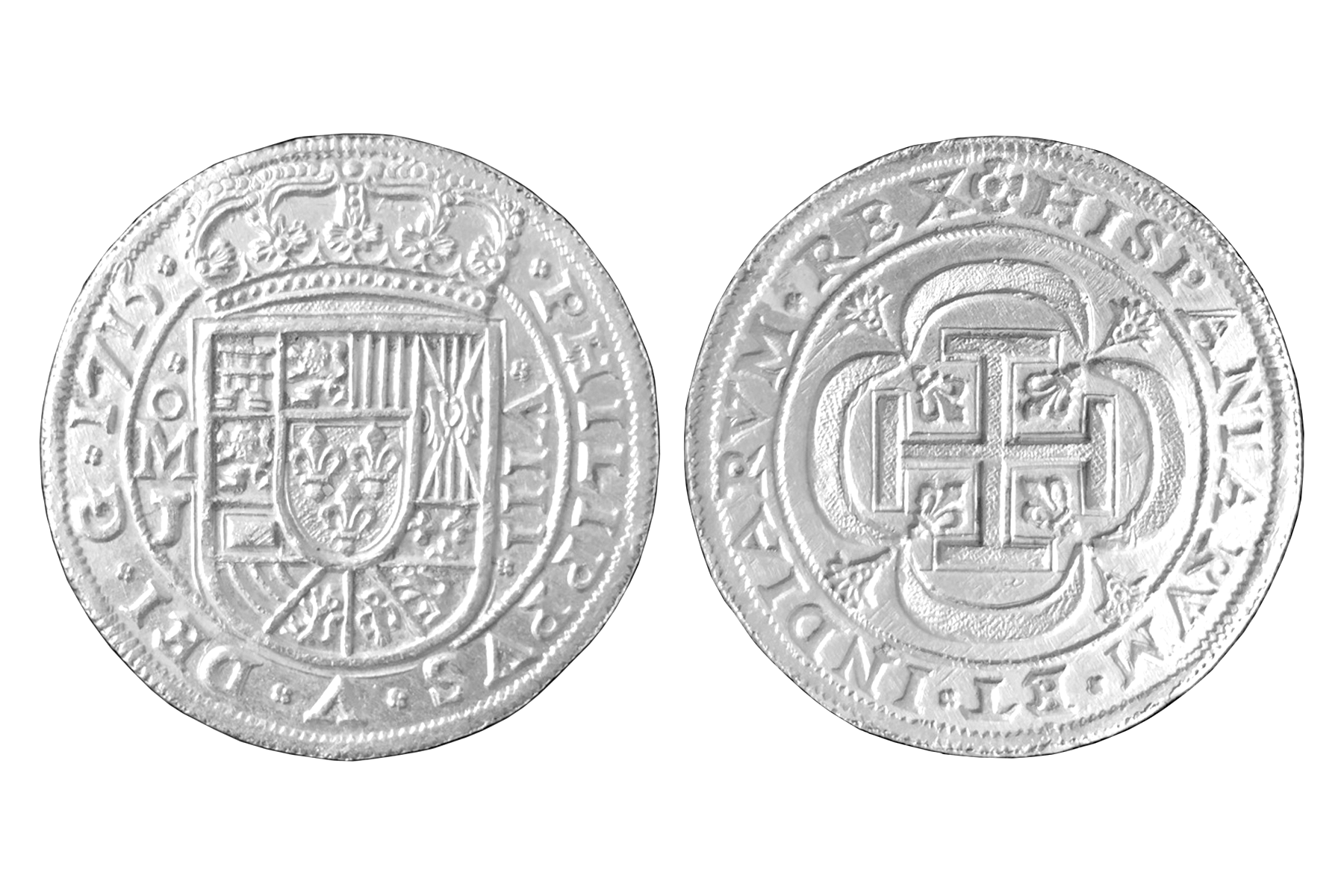In cooperation with the 1715 Fleet Society and its 300th Anniversary Commemoration of the loss of this famous Spanish fleet, Cover Coins, whenever possible over recent issues, have been selected from the Society’s website study set. BUT…in a stroke of luck during “Commemoration Week” on the Treasure Coast, Brent Brisben, co-founder of 1715 Fleet—Queen’s Jewels, LLC, announced the recovery of the crème de la crème of 1715 Fleet coins: an Eight-Escudo Mexican “Presentation Piece” dated 1715! Having been recovered on the Douglass Beach wreckA 1715 Fleet wreck site located a few miles south of the Fort Pierce Inlet. It is often referred to by its old name, “Colored Beach.” In some early Real Eight Company correspondence, it was referr... More site in Fort Pierce by Eric Schmitt and his family of divers, the iconic doubloon was quickly dubbed the “Tricentennial Royal” at the news conference on Tuesday, 28 July 2015. (Fotos: Queen’s Jewels, LLC)
Created at the Mexico City mint, the piece had been very carefully made to be round and have parallel faces. Using freshly-cut dies, the coin was struck deeply … and by using great pains that the strikes were aligned front to back. Every intended detail on both sides is visible and sharp, unlike many of its cob “cousins” being manufactured in Mejico.
Notice the very detailed crown on the obverse and the “textured” cross and tressure on the reverse. The fleurs-de-lis in the quarters of the cross are patently what is expected, and the floral “bouquets” which join them at the junctions of the tressure lobes are typical of the “royals” of 1714 and 1715. But, most of all, the greatest detail on this magnificent specimen is its date: 1715, by all means earning the piece the nickname the “Tricentennial Royal”! Congratulations to all involved in its recovery. — EJR

Responses